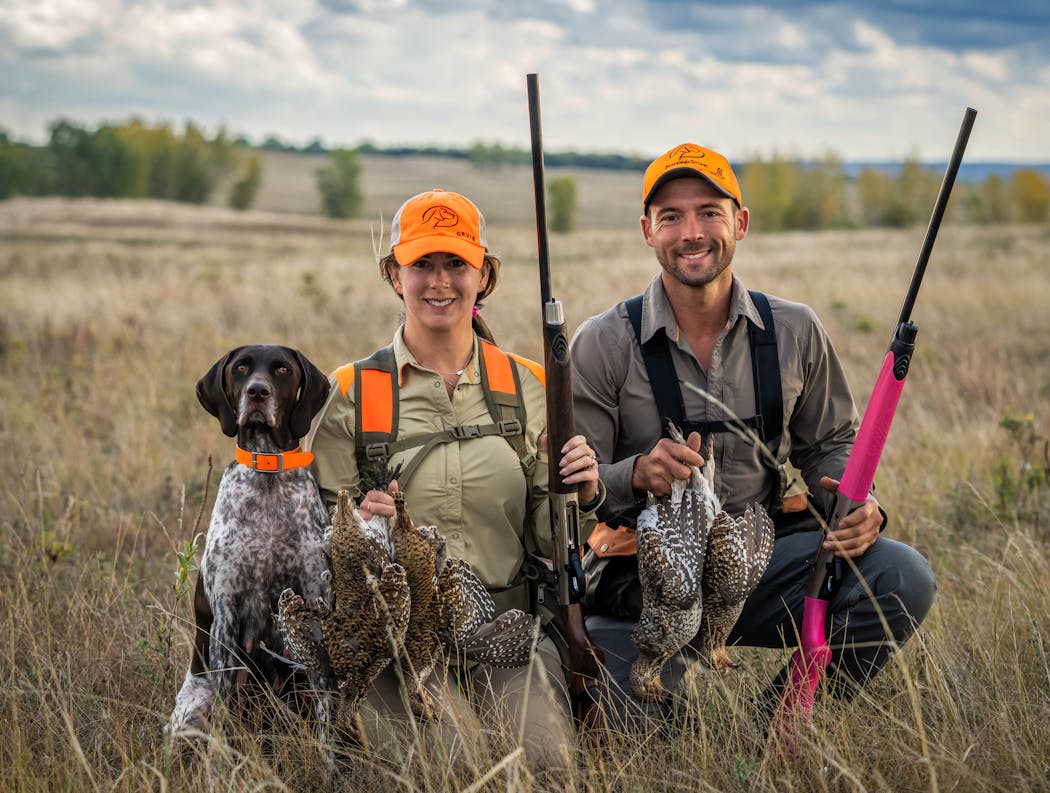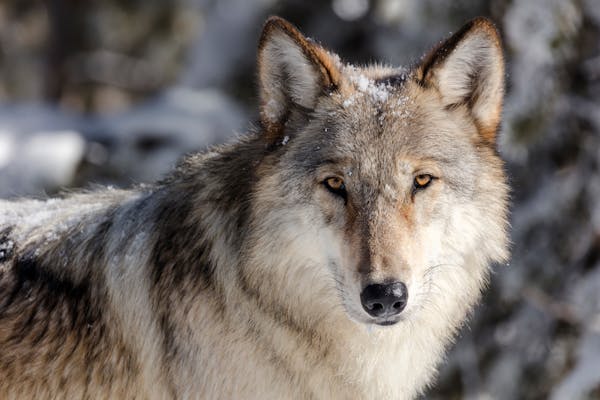Elly Stortroen was 5 years old in 2016 when Tom Hackbarth, a Minnesota House member, cocooned himself in a gaudily colored sweatshirt and told his fellow legislators the time had come for hunters to think pink.
Elly, of Fergus Falls, didn't know Rep. Hackbarth at the time, but about six years later, when she and her grandpa, Mark Stortroen, strolled into Fleet Farm in their hometown, looking for hunting duds for Elly, she glommed onto a blaze pink camouflage deer hunting coat excitedly, as if its purchase came with the guarantee of a trophy buck.
"While hunting," Stortroen said, "Elly would rather wear blaze pink than blaze orange."
Yet some six years removed from Hackbarth's colorful legislative triumph, most Minnesota hunters still prefer to don obnoxiously hued blaze orange clothing rather than the equally obnoxiously hued blaze pink.
Pheasants Forever, for example, headquartered in Minnesota, doesn't peddle blaze pink gear to its 135,000 members, and the Minnesota Deer Hunters Association offers only a small selection of blaze pink vests, caps and jackets.
"Did I think legalizing blaze pink would help recruit more women to hunting?" Hackbarth said the other day. "It wasn't really my goal. But I thought it might help."
It hasn't: Women still make up only about 14% of Minnesota hunters, a figure that has stayed the same for the past 10 years.
Some women, it turns out, pan pink because they're offended by the notion that a special color would induce them to pursue deer or other game. Rep. Jamie Becker-Finn, a hunter, essentially said as much while arguing against Hackbarth's idea on the House floor. And a column last month in the online magazine NRA Women acknowledged the blaze pink phenomenon causes some women to see red.
Still, about a dozen states have legalized the hot color for hunting, and rose hues now tint a variety of hunting and shooting products.
Federal Cartridge Co. of Anoka, for example, markets Top Gun Pink Target Load Shotshells (from $10.99) and donates a portion of each sale to breast cancer research. And a five-round, ultra-lightweight .38 special handgun called the Pink Lady Off Duty ($406) promises "to be much less likely to be 'borrowed' by the gentleman of the house!'' according to its manufacturer, Charter Arms.
Regardless of the color of a hunter's duds, safety is the goal. Minnesota's switch from red to blaze orange for required hunting clothing began in 1994. That change, along with hunter education, has dramatically reduced hunters' firearms-related injuries and deaths.
Minnesota averaged well more than 100 hunting accidents a year, with as many as 20 fatalities, from 1965 to 1969, for instance, while in a similar five-year span, from 2018 to 2022, the average was 13 accidents, with zero fatalities in two of the six years.
Retired University of Wisconsin professor Majid Sarmadi, a textiles expert, stresses no color is as important to hunter safety as proper firearms handling and other best practices in the field, such as carefully climbing into and out of tree stands.
Sarmadi's research nevertheless indicates blaze pink is as visible to people in wooded and open settings as blaze orange, and in some instances, more so. Pink also is less visible to deer than orange.
Sarmadi researched blaze pink for Wisconsin legislators. In 2016, blaze pink was successfully legalized for hunting in the Badger State, the first state to do so. Using a spectrophotometer to gauge light reflected from several orange and pink hunting hats, Sarmadi's findings indicated "the blaze pink that was tested had similar visibility to most blaze orange hats and was even better than a couple of them."
While blaze pink is slightly less visible to deer than blaze orange, Sarmadi said that any color-related clothing benefit to hunters would likely be negligible when taking other sensory obstacles into consideration. This includes the scent a hunter exudes — including the laundry detergents they use — and the noise and movements they make in their stands. All of these things can give away a hunter's location more readily than clothing color, Sarmadi said.
Ethan Pippitt is one guy who brandishes blaze pink unabashedly. A mainstay each August at Game Fair in Ramsey, Pippitt is a sporting dog trainer who, with his wife, Kat, owns Standing Stone Kennels in Pretty Prairie, Kan.
From South Dakota pheasant country to Texas quail haunts, Pippitt is known as the "Guy With the Pink Gun."
"I painted my first gun pink when I started running hunt tests with my dogs," said Pippitt, who produces a popular YouTube channel with the "Guy With the Pink Gun" moniker. "I did it to stand out a little and stayed with it."
Utah-based hunting vest manufacturer Final Rise had an exhibit earlier this year at Pheasant Fest in Minneapolis. Final Rise is among the American companies that produce blaze pink gear. Though they're not as popular with hunters as blaze orange, blaze pink Final Rise vests are purchased by men and women.
Hackbarth, who retired from the Legislature in January 2017, remains a blaze pink believer and says he has seen hunters wearing the color in the woods.
"It sticks out like a sore thumb,'' he said.
Elly Stortroen, the 12-year-old from Fergus Falls, rocks blaze pink for another reason: It brings her good luck.
Last year, during her first whitetail season, she felled a deer with her .243.
This year she got one, too.

Anderson: Chiovitte's state record walleye shouldn't be thrown back

Anderson: Minnesota's muskies are no match for sonar gadget

Anderson: Anatomy of a nighttime helicopter rescue in Boundary Waters

Anderson: With summer training, know a dog's tail is meant to wag






